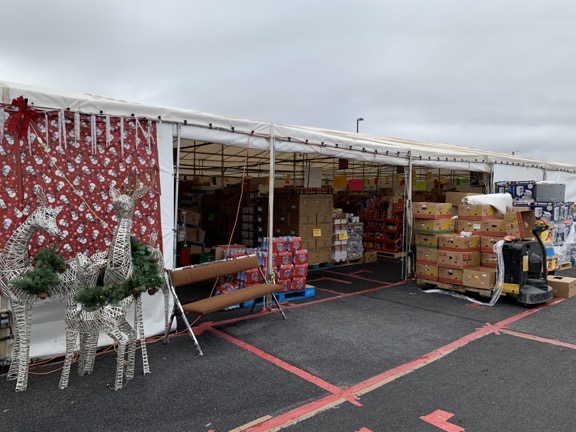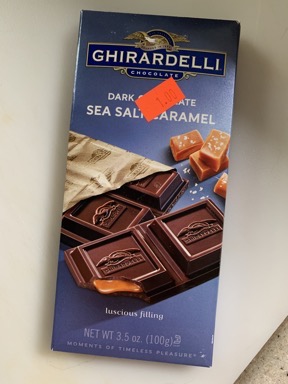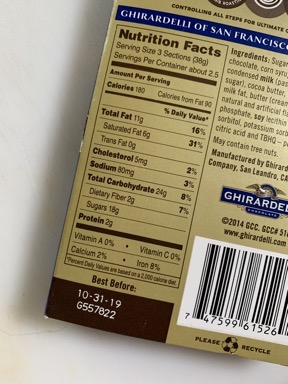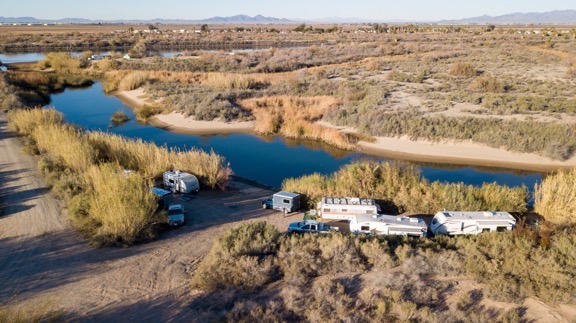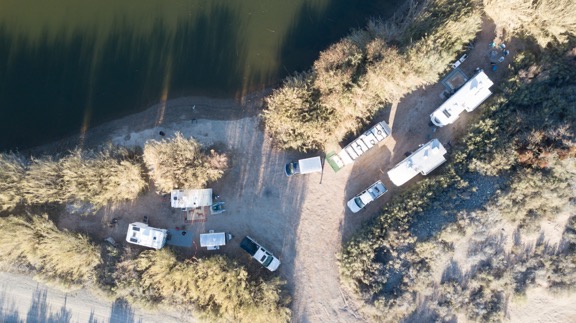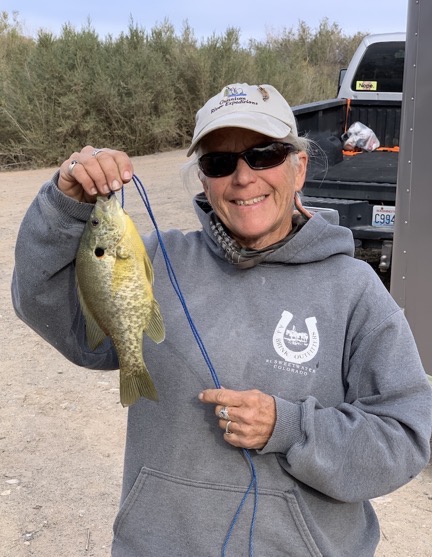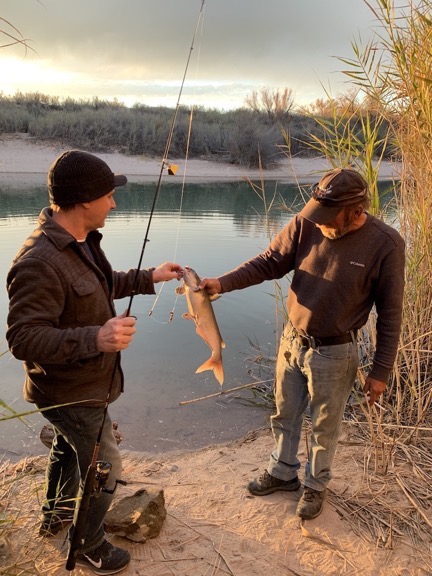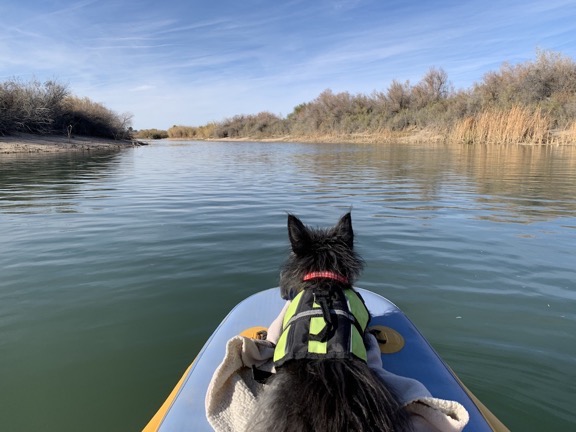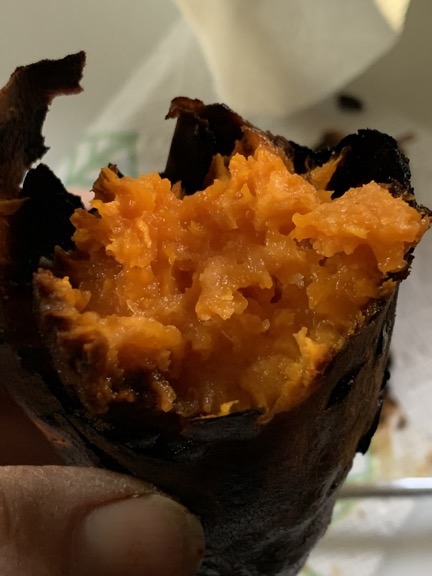An aerial view of our campsite at the Colorado River backwaters.
I launched the drone early Thursday morning to capture some aerial views of our campsite. In hindsight, I realize I did it too early — the shadows were still long. But the wind had been blowing too hard to fly safely during the previous days and I didn’t know if it would kick up again. So I launched, grabbed a few photos, and landed. Here are two of them.

Here’s a view from the east and slightly south.
Janet and I are camped on the left. Steve, Karen, Jeff, and Theresa are camped on the right. There’s an access road between our two campsites because there’s a boat ramp there. The water has been too low to launch a boat of any real size so it’s only been used twice — both times by wildlife researchers — since we’ve been here. (I launched my little jet boat here two years ago.)
The body of water we’re on is one of the backwater channels that exist alongside the Colorado River in some places. I don’t know the story behind these areas. Were they cut to drain wetlands? Did they form naturally? Whatever the story, this particular backwater runs about two miles north of our position with various side channels. The only opening to the river is just west of us, although with the water so low, it’s impassible by even my kayak. You can see the Colorado River in the far left of this shot; everything in the top of this frame is in California. (We’re in Arizona.)

Here’s a look straight down at our setup.
If you think there are a lot of vehicles here for just six people, you’re right. On the left, you can see Janet’s trailer (“Joey”) sitting by itself. Below that in the frame is a lineup of my vehicles: my truck camper (“T2”) parked on its legs, my cargo trailer/workshop (“Lily Rose”), and my pickup truck. On the right, you can see Janet’s truck (“Blue’) and her workshop trailer (“the Vega”) parked at the top of the frame, closest to our camp. Below that in the frame is Jeff and Theresa’s truck and fifth wheel trailer. In the top right of the frame is Steve and Karen’s bumper pull trailer. In looking at this, I realize that Steve and Karen’s van is missing from this shot; one of them must have been out with it. If I’d taken the shot the day before, you would have seen their 10×10 work tent set up between the Vega and their trailer.
The campsite is fewer than 3 miles from the freeway, which I’m thrilled about. We usually camp at least 7 miles away and the gravel road we drive to get back and forth into town is a jarring ride that beats the crap out of my truck’s tires and shocks. This site is off that main gravel road, although it’s close to the levee access road. Fortunately, we’re sunk down off of the levee road to nearly the high water mark, surrounded by bushes and long stands of bamboo. We have plenty of privacy and the vegetation prevents dust from getting down into our site.
This campsite is completely off-the-grid. There are no hookups or other facilities so you have to bring in everything you need: power, water, propane, and toilet. My rig has 2 12-volt RV batteries and a total of 360 watts of solar power to keep them charged. It holds 30 gallons of fresh water, but I also have 2 7-gallon jugs to fetch more. I have 2 5-gallon propane tanks that provide heat and hot water and keep my refrigerator running. Over the years, I’ve learned how to minimize toilet usage so the 30-gallon waste tank lasts two weeks without stinking. We do have cell phone service, but it’s weak — usually 1 or 2 out of 4 bars on my phone. If I hold my phone just right, I can get on the Internet.
For the most part, my companions are fine to camp with, although the newcomers, who don’t have solar panels on their rig, tend to run their loud generator a bit too often and long for my taste. (If you’re going to camp off the grid for any length of time, you need solar panels to keep your batteries charged. Running a generator for hours on end is simply inconsiderate to the people around you who don’t come out here to listen to your cheap generator because you don’t know how to conserve power.) We occasionally get together as a group for dinner or a campfire, but more often, Janet and I do our thing independently of the others. She and I are both getting work done here — she’s an artist and I’m making jewelry — but also finding time to fish, go out in our little boats, or go into town to shop or take care of errands like fetching water or propane.
We’ll be here for about two weeks — which is the limit for BLM land. Steve and Karen will pull out Saturday and Janet will do some traveling without her rig for the holidays. She’ll get back for a few days and then we’ll pack up and move out to our next destination at the first two Tyson Wells shows in Quartzsite about 25 miles away.
This is my fifth (I believe) December camping out in this area with my friends. I first did it with my big fifth wheel (“the Mobile Mansion”) and then, when I sold that, continued doing it with the two truck campers I owned (“the Turtleback” and “T2”). I have to say that despite the few shortcomings in comfort, I really do love coming here and I look forward to it every year.
